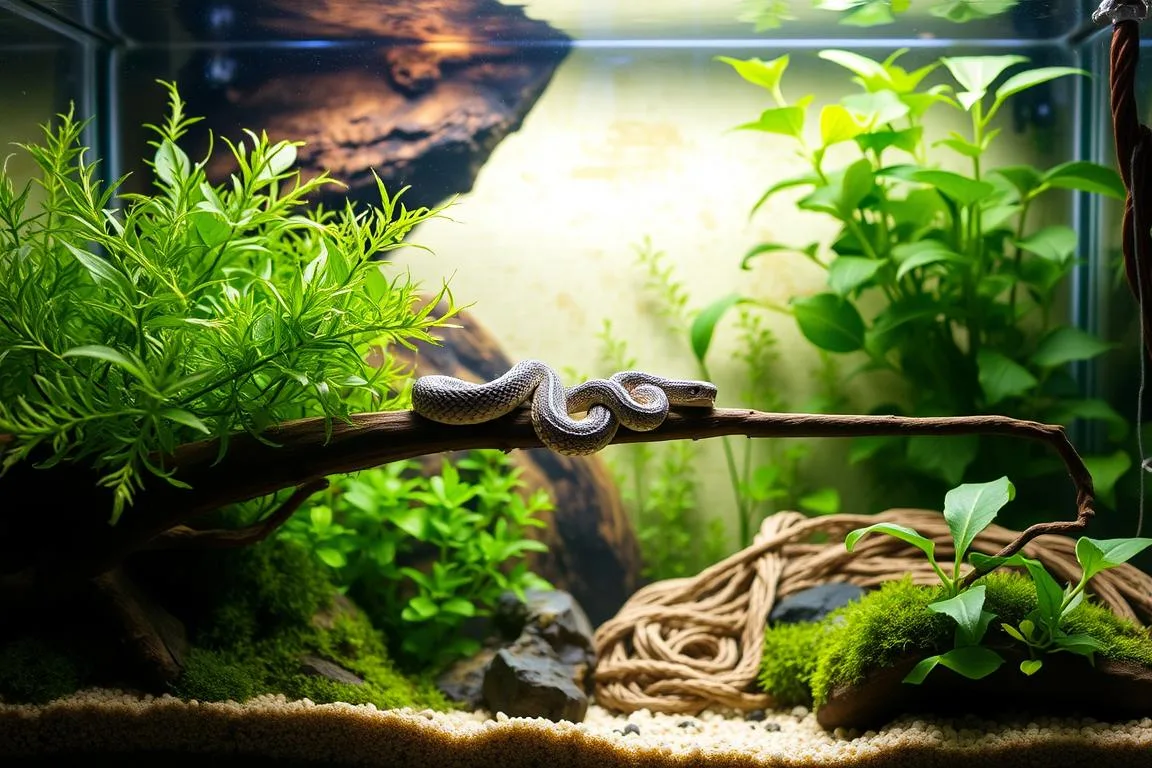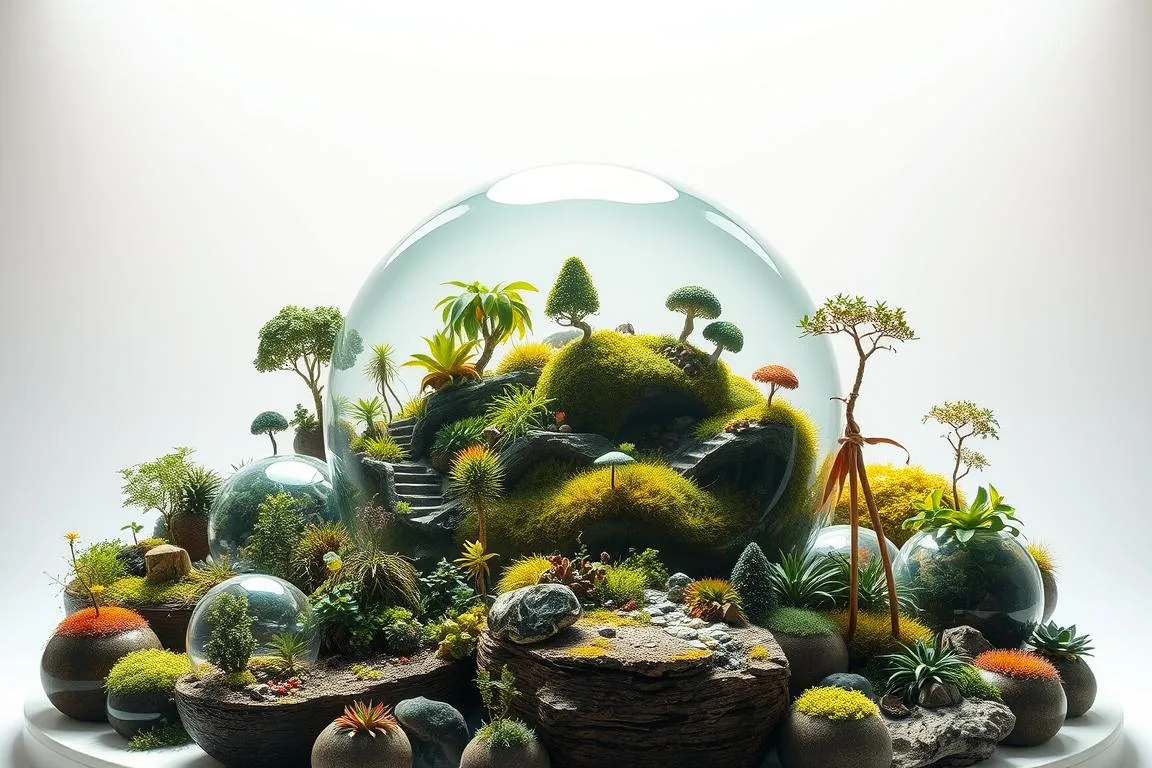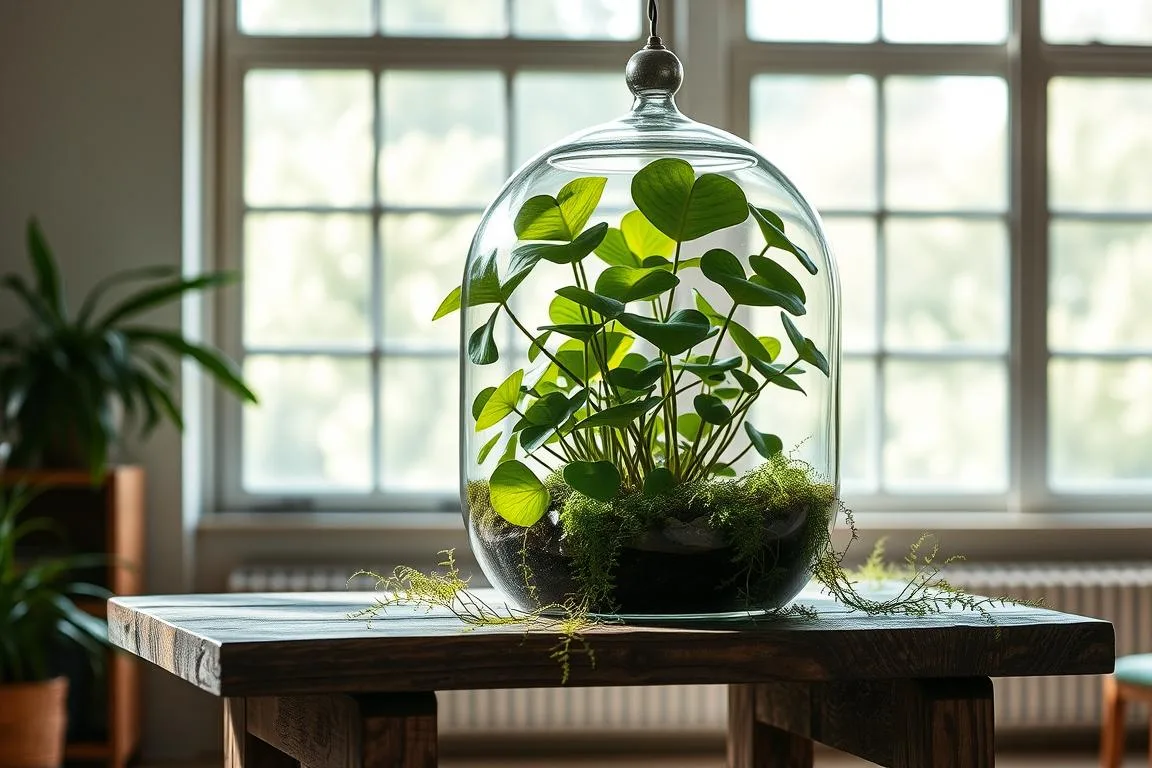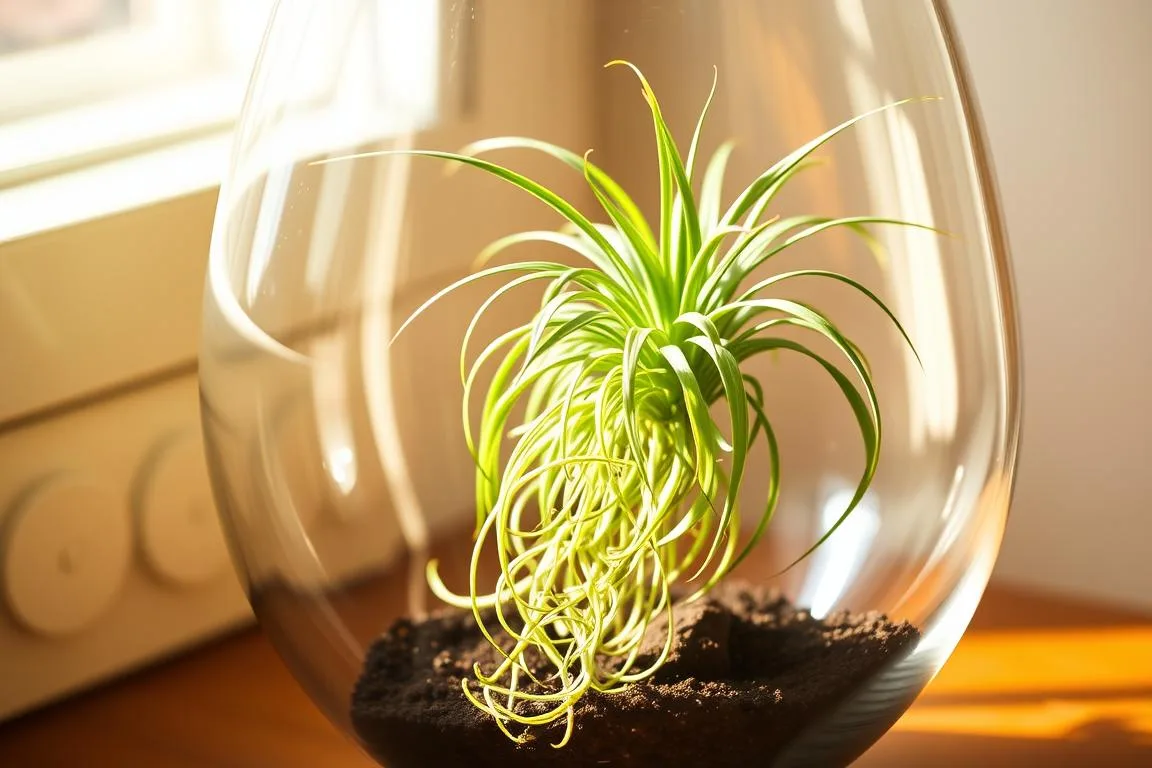Creating a comfortable home for your arboreal companion doesn’t have to feel overwhelming. This guide walks you through the essentials of designing a habitat that mimics their natural environment while keeping maintenance simple. Let’s dive into why this enclosure size is a favorite among reptile enthusiasts!
Vertical space is critical for these tree-dwelling reptiles. Unlike traditional aquariums, tall enclosures allow them to jump, climb, and explore freely—behaviors vital for their physical and mental health. If you’re repurposing an old fish tank, conversion kits from brands like Aqueon can help adapt horizontal spaces into thriving vertical ecosystems.
Proper dimensions ensure your pet has room to grow. Adult specimens need enough foliage and hiding spots to feel secure, which we’ll cover in detail later. You’ll also discover how to select substrates, lighting, and decor that balance aesthetics with functionality.
Ready to build a sanctuary your scaled friend will love? Follow along as we break down each step, from choosing the right materials to maintaining ideal humidity levels. By the end, you’ll have everything needed to create a safe, engaging, and visually appealing habitat!
Planning Your Crested Gecko Habitat
Designing a thriving environment for your tree-dwelling pet starts with smart planning. A well-structured habitat supports natural behaviors like climbing and hiding, ensuring your reptile stays active and stress-free. Let’s explore how to pick the right tools and layout for long-term success.
Choosing the Ideal Enclosure and Accessories
Prioritize vertical space when selecting an enclosure. These agile climbers thrive in tall setups—aim for dimensions that allow at least 18 inches of height. Conversion kits simplify transforming old aquariums into functional habitats, with brands like Aqueon offering pre-cut ventilation panels and secure lids.
Accessories should mimic their rainforest home. Include cork bark hides, sturdy branches, and artificial plants for coverage. Sticky climbing pads and magnetic ledges add enrichment, letting geckos explore safely. Reptile shops often sell curated kits with these essentials, saving time while ensuring quality.
Gathering Essential Supplies and Materials
Start with a moisture-retaining substrate like sphagnum moss or coconut fiber. Digital thermometers and hygrometers help monitor conditions, while low-wattage heat mats maintain gentle warmth. Don’t forget shallow food dishes and a mister for hydration.
Upgrade options like bioactive setups incorporate live plants and cleanup crews for easier maintenance. Whether repurposing an enclosure or starting fresh, focus on durable, non-toxic materials. Planning ahead ensures your scaled friend enjoys a space that’s both practical and engaging!
Designing Your 20 Gallon Crested Gecko Tank

Crafting a habitat that mirrors a rainforest canopy requires thoughtful design. Start by focusing on the enclosure’s structure—every inch should serve a purpose for your pet’s natural behaviors.
Space Optimization for Active Climbers
The ideal dimensions (30.25×12.5×12.75 inches) prioritize vertical movement. Tall setups allow arboreal species to leap between branches and explore elevated hideouts. Magnetic ledges maximize wall space, freeing the floor for feeding areas or shelters.
Building Dynamic Exploration Zones
Layer cork tubes, driftwood, and vines at varying heights to create climbing challenges. Leave open gaps between decor to encourage jumping—a key exercise for muscle development. Dense foliage near the top offers resting spots while maintaining airflow.
Functional Decor for Natural Behaviors
Live plants like pothos or bromeliads boost humidity and provide hiding coverage. Pair them with pre-assembled terrarium kits containing substrate barriers and drainage layers. For added convenience, consider conversion-ready enclosures designed specifically for vertical habitats.
Balance is crucial: too many decorations limit movement, while sparse setups stress reptiles. Test layouts by observing if your pet uses all levels comfortably. A well-structured environment keeps them engaged and mimics their wild ecosystem!
Converting an Aquarium into a Gecko Terrarium

Repurposing an aquarium offers a budget-friendly way to create a vertical habitat. Many reptile enthusiasts find this DIY approach rewarding, especially when balancing cost and customization. Let’s explore how to transform your existing setup into a thriving space.
DIY Tips for a Smooth Tank Conversion
Start by verifying your enclosure’s dimensions. Horizontal tanks need structural adjustments to support climbing. Replace the original top with a secure door system—mesh panels work well for airflow. Use waterproof silicone to seal gaps, preventing escapes and maintaining humidity.
Conversion kits simplify the process. These often include pre-cut vents, hinges, and locking mechanisms. For example, the gecko hobby community recommends kits with adjustable ventilation slots. This ensures proper airflow without sacrificing safety.
| Feature | DIY Approach | Conversion Kit |
|---|---|---|
| Cost | $15–$30 | $40–$70 |
| Customization | High | Moderate |
| Time Investment | 3–5 hours | 1–2 hours |
Avoid overcrowding decor during setup. Test door functionality weekly—sticky hinges are a common issue. Live plants like pothos thrive in these environments, but ensure substrate depth supports roots.
This project not only saves money but also lets you tailor every detail. With patience and the right tools, you’ll craft a habitat that mirrors nature while fitting your space perfectly.
Final Touches and Ongoing Gecko Care
Ensuring a thriving habitat goes beyond the initial setup—it’s about daily dedication. Start with a final checklist: adjust climbing branches for stability, add moss pads for hydration, and test temperature gradients (72–78°F). A digital hygrometer simplifies humidity tracking, aiming for 60–80% to mimic their rainforest roots.
Weekly routines keep environments fresh. Replace substrate monthly, spot-clean waste daily, and disinfect decor every 2–3 weeks. Use a reptile-safe cleaner to avoid harmful residues. Always keep water dishes shallow to prevent accidents, and mist foliage twice daily for drinking opportunities.
Monthly audits help maintain dynamic spaces. Rotate decor to spark curiosity and prune overgrown plants. Ensure floor areas stay clutter-free for easy movement. Trusted reptile shops offer bioactive cleanup crews or replacement vines, reducing your maintenance workload.
Small upgrades sustain engagement. Swap artificial plants seasonally or introduce new textures like bamboo tubes. These tweaks align with natural behaviors, keeping your pet active. Remember, a well-maintained habitat supports longevity and deepens your hobby satisfaction.
Bookmark care guides from vetted sources and join online communities for tips. With consistent attention, your scaled companion will thrive in a space that grows alongside their needs!





